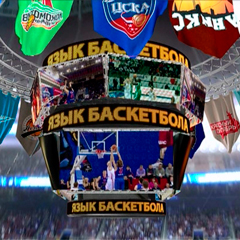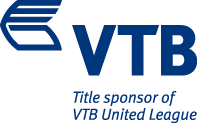10september
Language of Basketball. Double team, backdoor cut and defensive mismatch

VTB-League.com presents Part V in the Language of Basketball series, highlighting the words and phrases every basketball fan needs to know. Together with detailed explanations, we've provided clips from the VTB United League to illustrate each concept.
Today's edition covers three new terms: double team, backdoor play and defensive mismatch.
Double team
The double team is one form of defense. During a double team, two defenders put pressure on one opponent, keeping him from shooting or passing the ball. The tactic is most often used against talented offensive players that cannot be stopped one-on-one.
It has its pluses and minuses. If the opponent has one superstar who does most of the scoring, a double team can help to stop him and disrupt the offense. At the same time, constant double teams give the other players on offense a lot more room to operate. At least one player is guaranteed to be open, making it easier to score.
Double teams are often used during pick-and-rolls with the defense attempting to stop the ballhandler. They are also popular against dominant centers who are otherwise unstoppable in the paint.
Backdoor play
The backdoor play was made especially popular by the NBA and revolves around a big man and guard, with the big man dishing the ball to a cutting teammate on his way to the basket.
The guard starts the play by cutting to the basket from the perimeter (often along the baseline), while his teammate passes him the ball.
It's not the easiest play to execute and requires a great degree of familiarity between the two players. Any hesitation on the cut or the pass is likely to end in a turnover. That may be why the backdoor play, despite its effectiveness, is less common than the pick-and-roll.
Going backdoor is especially effective if the other team is playing in a zone and does not have man-to-man coverage.
Defensive mismatch
A defensive mismatch is created when the other team is forced to make a switch on defense with a taller player forced to defend a shorter guard and vice versa.
Defensive mismatches most often occur during pick-and-rolls. It's one of the simplest ways to defend against the play (though not the most effective). But some teams do a good job of forcing mismatches.
Doing so has several advantages. Most importantly, the offense creates a situation where the guard can easily shake his bigger, slower defender on the perimeter while the center has a chance to dominate a smaller defender under the basket.












































